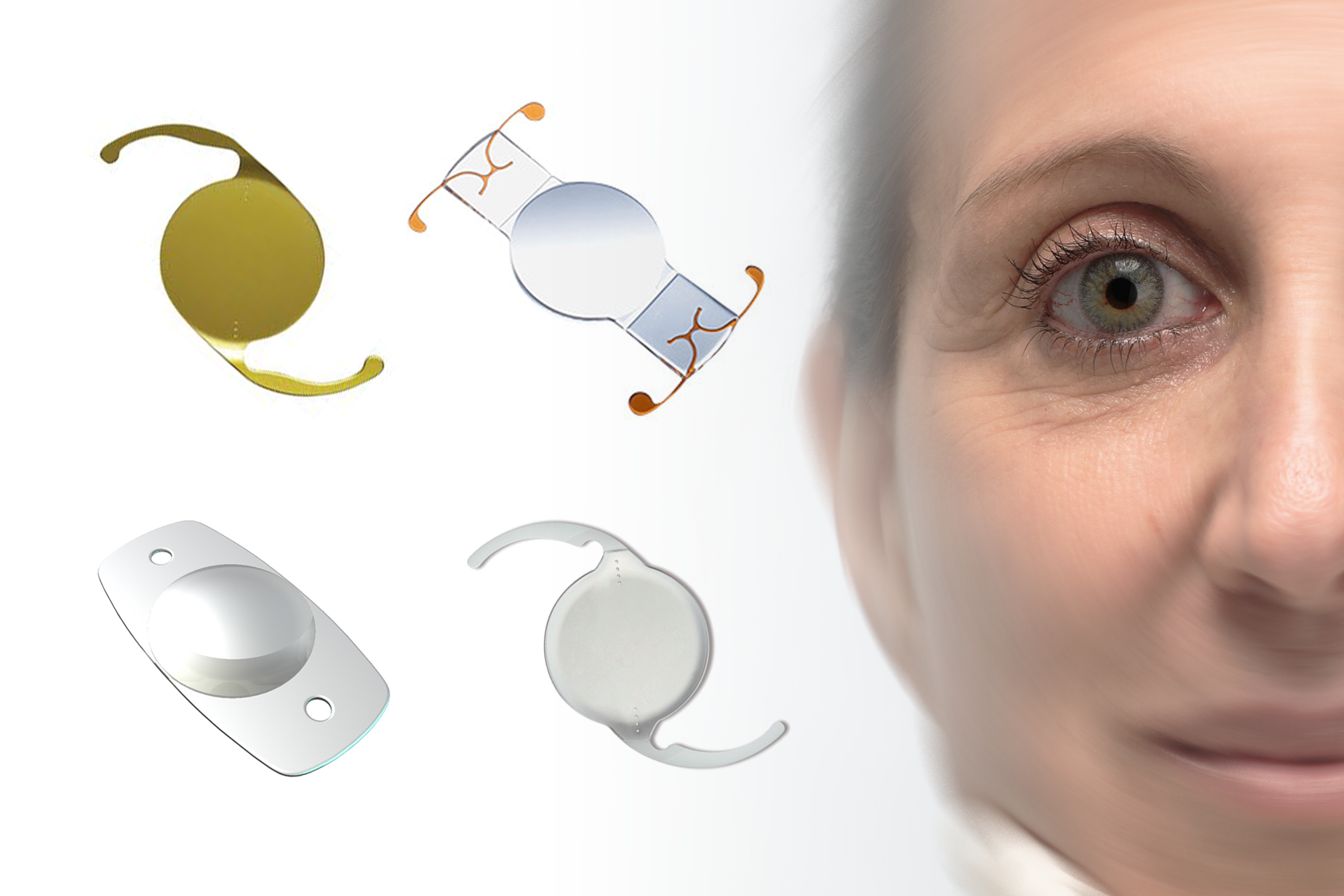
Intraocular Lens
Intra-Ocular Lens: Article about Different Types of Artificial Lenses used in Cataract Surgery.
An intraocular lens (IOL) is an artificial lens that is implanted inside the eye to restore its light-refracting function after surgical removal of the natural lens in cataract, as well as to correct vision in patients over 40 years of age with farsightedness and myopia.
The main task of the artificial lens is to make vision focused. Lens implantation usually significantly reduces the patient's dependence on glasses.
For the manufacture of artificial lenses, manufacturers use biocompatible materials that take root well and are not rejected by the body.
Artificial lenses are of different types:
- By appearance: hard and soft:
- Rigid IOLs have a permanent shape, they are not flexible and require a large incision and suture at the end of the operation.
- Soft IOLs can be implanted through a self-sealing 2.2 mm incision when folded, self-deploying inside the eye and holding a stable position.
- By design: monoblock and multi-piece:
- For monoblock IOLs, the optical and support elements of the lens are made of the same material.
- Multicomponent IOLs , for example, three-part IOLs - when an elastic, flexible polymer is chosen for the optical part, and not flexible for the support elements.
- By material type: hydrophobic and hydrophilic
- By the presence of additional filters: with or without a yellow filter.
- By ability: monofocal, multifocal and toric
- Monofocal (monoblock) IOL - the most popular implant model: The result of surgery with a monofocal lens depends on the selected features that are most attractive to the patient. With such a lens, a person will not get rid of the use of glasses.
- Multifocal IOL (bifocal, trifocal, lenses with deep focus, accommodating): the most modern intraocular lens that allows the patient to see at all distances and completely refuse additional correction with glasses.
- Toric IOL - a lens that allows you to relieve the patient of corneal astigmatism.
- By the type of fixation inside the eye: intracapsular, fixation in the ciliary sulcus, pupillary, fixation to the sclera, fixation to the iris.
At Sadbhaav Eye & Dental Clinic, we offer our patients to implant an artificial lens with all different types of capabilities according to patient's needs and expectations from the surgery.
To date, there are no effective non-surgical methods for treating lens opacities. The only effective way to restore lost vision is to perform a microsurgical seamless operation, and within the first week you will be able to appreciate the whole world around you in new bright colors.
Learn more about the types and capabilities of lenses by calling +91-701-691-2180.
Your vision is our concern!
These all details in just for basic information about the diseases. Please consult your doctor before following this by yourself. --- Dr Dhaval Patel (MD, AIIMS Delhi)
- compiled & published by Dr Dhaval Patel MD AIIMS